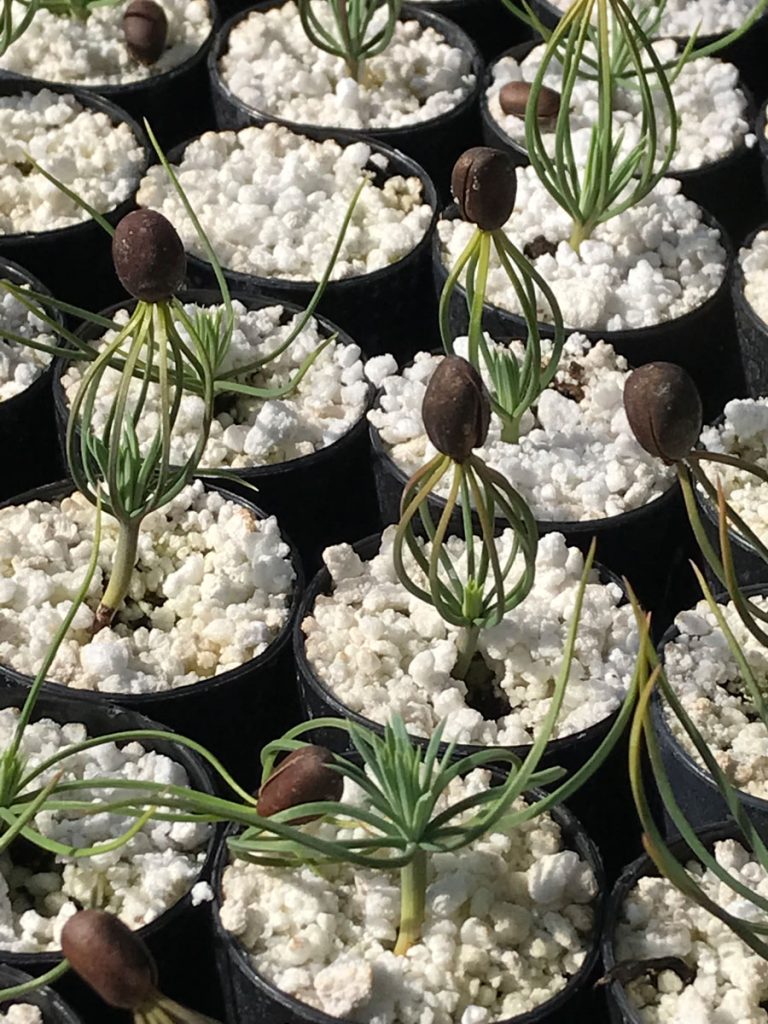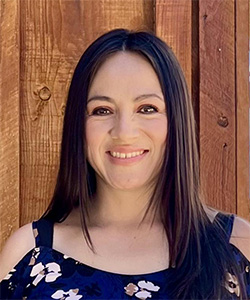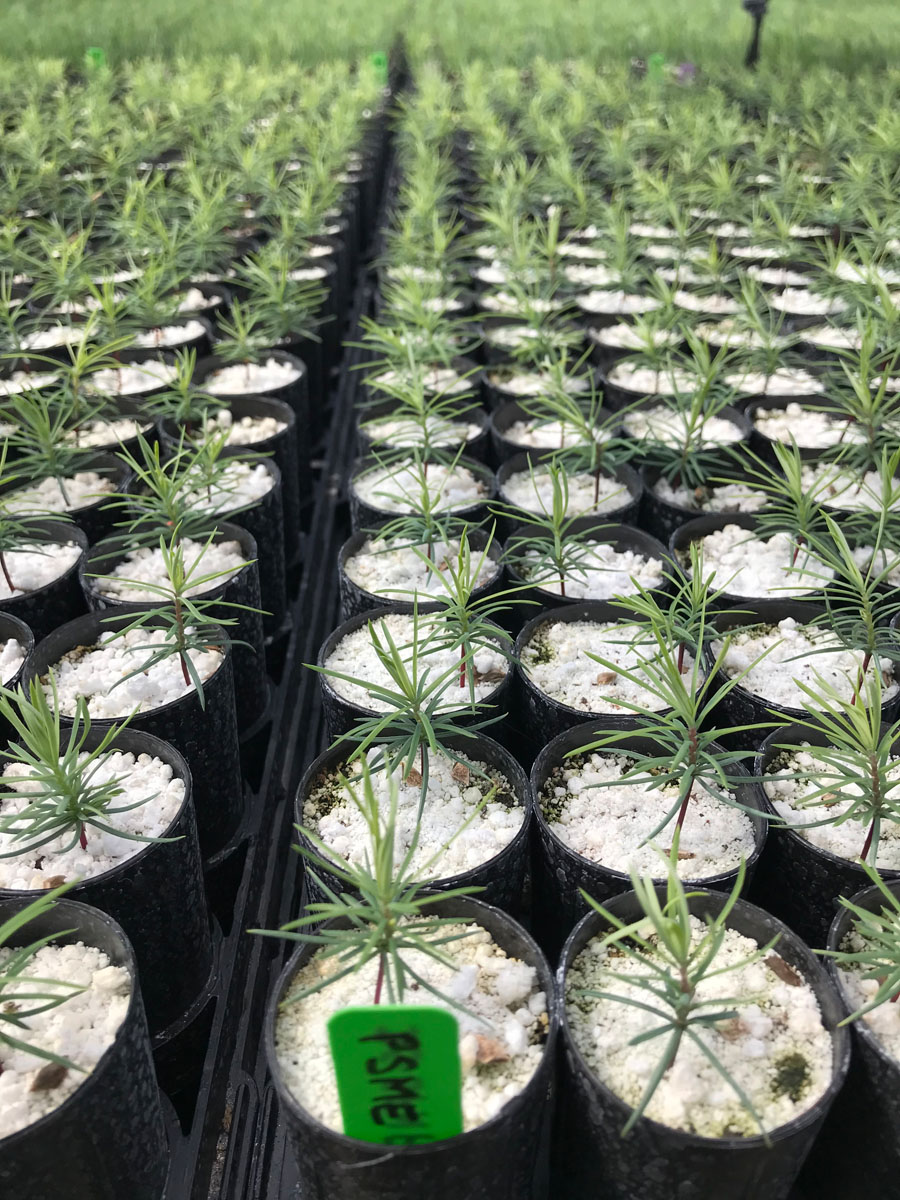
The onset of early fall signals harvest season for many of us. Be it a harvest of backyard veggies, big game, piñon nuts, or firewood—harvest is in the air. For others still, this season of harvest includes a long-term outlook on the order of decades to consider the future of our forests. Reforestation, or planting of trees to replenish what has been lost, is regularly planned and executed by foresters across the nation. This noble yet daunting task restores forest cover after significant loss through events like high-severity wildfire or insect outbreaks—just two examples among reasons as diverse as the trees themselves.
One might now be asking how planting of trees could have an even remote connection to harvest. Cone collection is the connection. What many call “pine cones” are actually the fruit of a conifer. Cones contain seeds and seeds make seedlings. Just like the piñon harvest, other conifers undergo seed ripening in fall and foresters are beholden to this timing. Not all fruit can be harvested in its immature state, to be utilized after later ripening, such as bananas. When the intention is to sow seedlings, the seed within the fruit must be mature at harvest. So, every September, foresters and their friends find themselves climbing into the tops of trees to capture nature’s bounty with the ultimate intent of planting trees in years to come. Sometimes this appears akin to a child in their backyard fruit tree. More commonly, though, it requires ropes, spurs, and other specialized gear to safely hoist oneself 60 to 100 feet off the ground. Think you’re not afraid of heights? Ask yourself again when you’re 80 feet up, facing a treetop no wider than your wrist and then the wind starts to gust! This task makes a person face the fact that they are a mere mortal being who will one day leave this fine earth.
So, next time you see a burly, bearded man in plaid (just kidding—harvesters are far more diverse than this stereotype), know that they may be more complex (and nimble) than they appear.
This year, our local Carson National Forest is anticipating a collection of more than 300 bushels of cones from bristlecone pine, limber pine, Engelmann spruce, Douglas fir, ponderosa pine, and Colorado blue spruce. Cones will be shipped to a nursery where seed is extracted and stored in freezers for up to several decades. As needs arise, foresters will order seedlings from specific species and elevations to then plant in locations similar in habitat. By year’s end, Carson National Forest will have planted tens of thousands of seedlings on approximately 600 acres. State, university, and other interested groups will have similar pursuits of cone collection and reforestation. Across the state, thousands of bushels will be collected this year, so rest assured that our friendly foresters are considering the long game, responding to disturbance, and preparing for future needs.
Author
-

Experience working with the USDA Forest Service and extensive knowledge of the northern region, while maintaining and fostering strong community relationships remain a big priority.
View all posts


